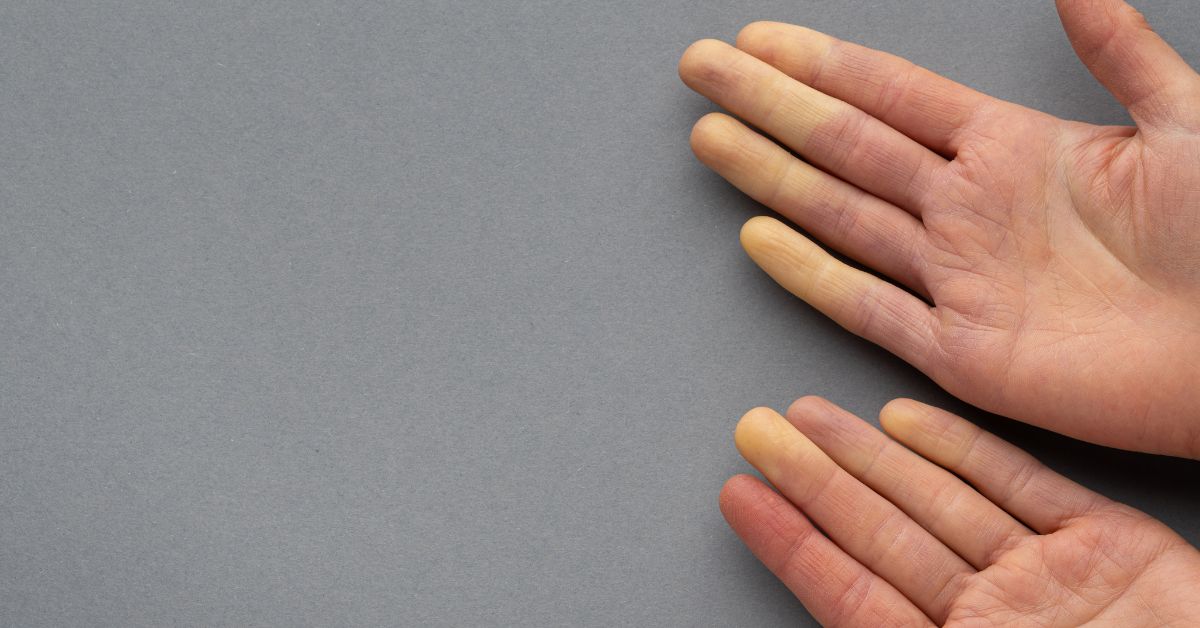Raynaud’s Disease – Symptoms, Causes And Treatment


Raynaud’s disease occurs when the small arteries in your fingertips and toes narrow in response to cold or stress, limiting blood flow to affected areas (vasospasm).For most people, Raynaud’s disease is not disabling, but it can affect your quality of life.
Request an appointment at Apollo Hospitals.
What is Raynaud’s disease?
It is classified into two types:
Primary Raynaud’s (or Raynaud’s disease) occurs in the absence of another illness. Typically, the symptoms are mild.
Raynaud’s phenomenon is frequently associated with an illness that targets your body’s connective tissues, such as lupus or rheumatoid arthritis. It is less frequent, but it has a higher risk of causing significant health issues.
What are the symptoms of Raynaud’s disease?
Raynaud’s disease signs and symptoms include:
- Cold toes or fingers
- Changes in skin color due to cold or stress
- A stinging sensation , numbness or discomfort while warming up
The region at the risk of the disease becomes white and then blue afterward. When a region is warmed, and the blood flow resumes, a red flush and perhaps swelling may occur. A painful, pulsating feeling might also be there.
What causes Raynaud’s disease?
Primary Raynaud’s causes: With Raynaud’s Disease, arteries to your fingers and toes become narrow and briefly limit blood supply. These small arteries, over time, can thicken slightly, further limiting the blood flow. Cold temperatures are most likely to trigger the attack and in some people , emotional stress can trigger an episode.
Raynaud’s phenomenon causes:
Connective tissue diseases, such as rheumatoid arthritis, lupus or Sjogren’s syndrome
- Carpal tunnel syndrome
- Disease of the arteries
- Injuries and repetitive movements and operating vibrating tools
- Smoking
- Adverse effects from some medications like migraine medications having ergotamine and sumatriptan, , attention-deficit/hyperactivity disorder medications, beta-blockers for high blood pressure, certain chemotherapy agents and drugs that cause blood vessels to narrow (such as some over-the-counter cold medicines)
When to see a doctor?
Consult your doctor if:
- You have severe Raynaud’s disease
- You have ulcers or sores or on your toes or fingers
- You have an infection
Request an appointment at Apollo Hospitals.
Call 1860-500-1066 to book an appointment.
What are the possible complications associated with Raynaud’s disease?
Some of the possible complications of Raynaud’s disease are,
- Decreased blood flow to your toes or fingers could cause tissue damage
- A totally blocked artery can cause sores (skin ulcers) or dead tissue
- Extreme untreated cases may need removing the affected part of your body
Since the medical condition could limit blood flow, it can also increase the risk of complications such as ulceration, scarring and even tissue death (gangrene) in extreme situations.
How is Raynaud’s disease treated?
Medications
To broaden the blood vessels and increase blood flow, your doctor may prescribe:
- Calcium channel blockers: Like nifedipine, amlodipine, felodipine and isradipine
- Vasodilators: These medications relax blood vessels. They include nitroglycerin cream (applied to the base of the fingers to help heal skin ulcers). Other vasodilators are losartan, the erectile dysfunction medicine sildenafil, the antidepressant fluoxetine and a class of medicines called prostaglandins.
Surgeries and medical procedures
If you have severe Raynaud’s Disease, your doctor may suggest injections or surgery.
- Nerve surgery: Sympathetic nerves in your feet and hands control the opening and narrowing of blood vessels in your skin. Cutting these nerves interrupts their exaggerated responses.
- Chemical injection: Doctors may inject chemicals like local anesthetics or onabotulinumtoxinA (Botox) to block sympathetic nerves in affected feet or hands.
Conclusion
Raynaud’s disease is a very common condition. Its patients should be referred to a doctor as soon as possible to help differentiate between primary and secondary Raynaud’s. Comprehensive history and physical exams can dictate the scope of the follow-up.
Frequently Asked Questions (FAQs)
Who’s generally impacted by this? Is it usual?
This illness can affect everyone but is more frequent in young women and in the family of Raynaud’s sufferers. This disease affects around 3-5% of the population but is more common in cold regions .
What diseases are associated with Raynaud’s phenomenon ?
The diseases most often linked with Raynaud’s phenomenon are autoimmune or connective tissue diseases.
How serious is Raynaud’s disease?
The skin gets red and may ache or tingle if blood flow resumes. The decrease of blood flow in severe instances might lead to ulcers or tissue death though it is rare .. Although Raynaud’s is typically not hazardous, it’s uncomfortable and irritating.
© Copyright 2024. Apollo Hospitals Group. All Rights Reserved.
 +91 8069991061
Book Health Check-up
Book Health Check-up
Book Appointment
Book Appointment
+91 8069991061
Book Health Check-up
Book Health Check-up
Book Appointment
Book Appointment







